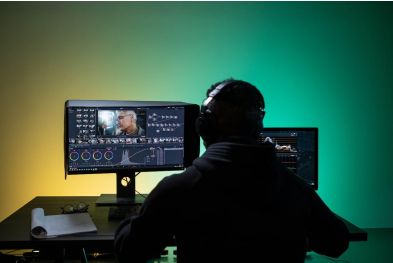How to Build a Cost-Effective PC for Students: Performance on a Budget
As a student, having a reliable and efficient PC is essential for studying, multitasking, and even light gaming. However, building a PC on a budget can be challenging. In this guide, we’ll show you how to create a cost-effective PC that delivers great performance without breaking the bank.
Why Build a PC for Students?
A custom-built PC for students offers several advantages:
Cost-Effectiveness: Save money by choosing components that meet your specific needs.
Performance: Tailor your system to handle studying, multitasking, and light gaming.
Upgradability: Easily upgrade individual parts as your needs evolve.
Customization: Build a system that fits your workflow and preferences.
Key Components for a Student PC
1. Processor (CPU)
The CPU is the brain of your PC. For a student PC, a mid-range processor is usually sufficient:
AMD Ryzen 5 5600G: Excellent for multitasking and light gaming.
Intel Core i3-12100: Great performance for general use and studying.
2. Graphics Card (GPU)
For most student tasks, integrated graphics are sufficient. However, if you need a dedicated GPU for light gaming or graphic design, consider:
NVIDIA GeForce GTX 1650: Great for light gaming and GPU tasks.
AMD Radeon RX 6400: Offers excellent performance for its price.
3. Memory (RAM)
Multitasking requires a good amount of memory. Aim for at least 8GB of DDR4 RAM with a speed of 3200MHz or higher.
4. Storage
Fast and ample storage is crucial for a student PC:
SSD: A 240GB or 500GB NVMe SSD is ideal for your operating system, software, and active projects.
HDD: Add a 1TB or 2TB HDD for storing large files and backups.
5. Motherboard
Choose a motherboard that supports your CPU and has the features you need. For example:
AMD Build: B450 or B550 chipset.
Intel Build: B560 or B660 chipset.
6. Power Supply (PSU)
A 450W or 550W PSU with an 80 Plus Bronze rating is sufficient for most student builds.
7. Case
Pick a case with good airflow and enough space for your components. Popular options include the Cooler Master MasterBox Q300L and NZXT H510.
Additional Features to Consider
1. Monitor
A high-quality monitor is essential for productivity:
Resolution: 1080p for clear visuals.
Size: 24 inches or larger for a comfortable work experience.
Dual Monitors: Consider using two monitors for increased productivity.
2. Cooling
Proper cooling ensures your PC runs smoothly and quietly:
Air Cooling: High-quality CPU coolers like the Noctua NH-U12S.
Liquid Cooling: AIO coolers like the Corsair H60 for efficient heat dissipation.
3. Peripherals
Keyboard and Mouse: Choose comfortable and responsive peripherals for long study sessions.
Webcam: A high-quality webcam like the Logitech C920 for clear video calls.
Headset: A good headset with a microphone for virtual classes and meetings.
4. Operating System
Choose an operating system that fits your study needs:
Windows: Great for general use and compatibility with most software.
Linux: Ideal for programming and those who prefer open-source software.
macOS: Perfect for creative professionals and those in the Apple ecosystem.
Step-by-Step Guide to Building Your PC
Install the CPU: Carefully place the CPU into the motherboard socket.
Install the RAM: Insert the RAM sticks into the appropriate slots.
Mount the Motherboard: Secure the motherboard inside the case.
Install the GPU: Insert the graphics card into the PCIe slot (if applicable).
Connect Storage: Attach the SSD and HDD to the motherboard and power supply.
Connect Power Supply: Plug in all necessary power cables.
Cable Management: Organize cables to improve airflow and aesthetics.
Test Your Build: Power on your PC and ensure everything works correctly.
Example Student PC Build
Here’s an example of a cost-effective student PC build:
| Component | Model | Approx. Cost |
|---|---|---|
| CPU | AMD Ryzen 5 5600G | $150 |
| GPU | Integrated Graphics | $0 |
| RAM | 8GB DDR4 3200MHz | $40 |
| Storage | 240GB SSD + 1TB HDD | 30+30+40 |
| Motherboard | B450 Chipset | $80 |
| PSU | 450W 80 Plus Bronze | $50 |
| Case | Cooler Master MasterBox Q300L | $50 |
| Total | $440 |
Final Thoughts
Building a cost-effective PC for students requires careful consideration of components and features to ensure smooth and efficient performance. By following this guide, you can create a powerful and reliable PC that meets your study needs and enhances your productivity.
Whether you’re studying, multitasking, or enjoying light gaming, a well-built PC will provide the performance and reliability you need to succeed academically.
Reminder:
Found this guide helpful? Share it with your friends and fellow students on social media! Let’s help everyone build cost-effective and efficient PCs. 🚀
By following these steps, you’ll be able to create a PC that delivers excellent performance for your studies, ensuring a smooth and efficient workflow. Happy studying!







